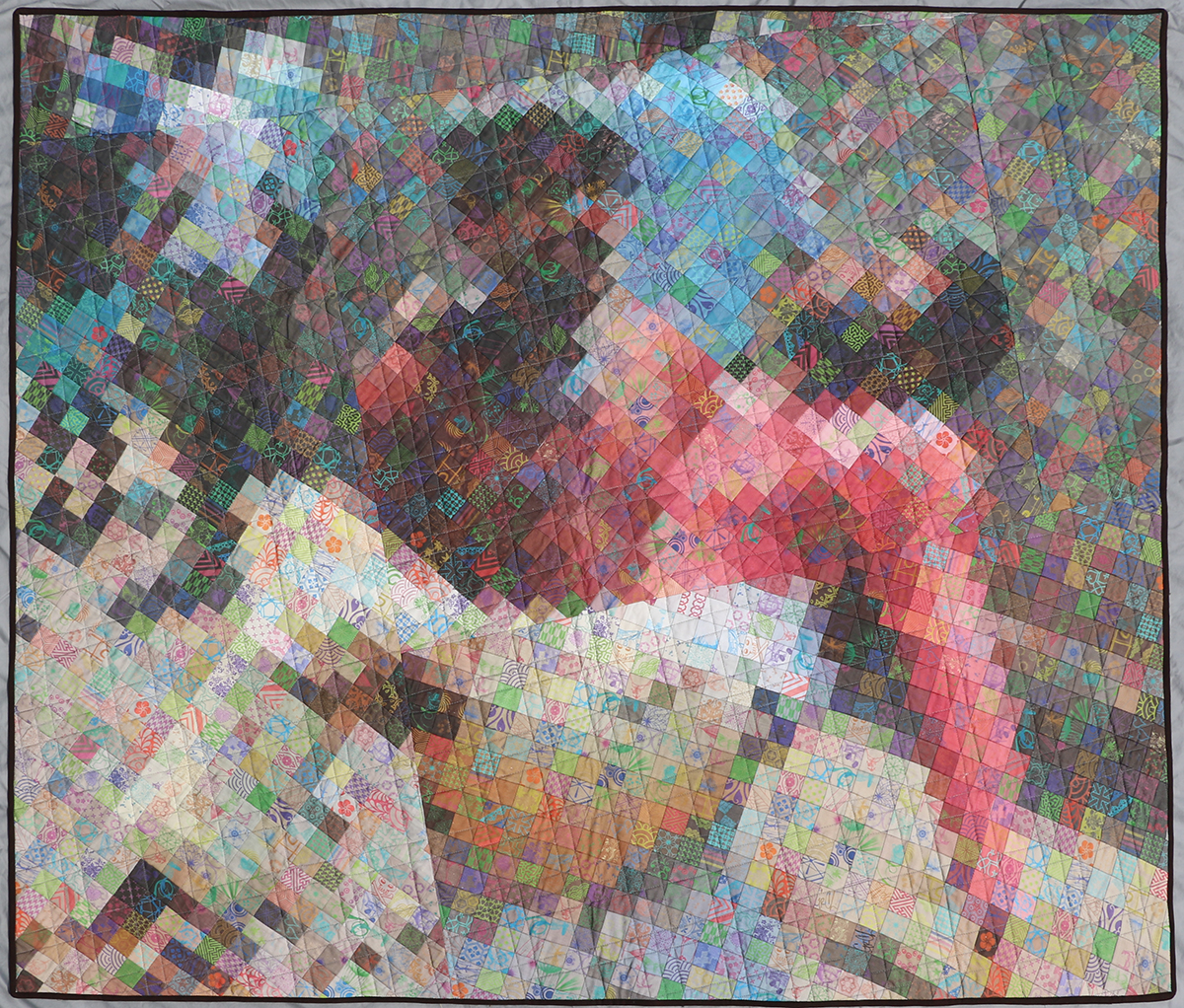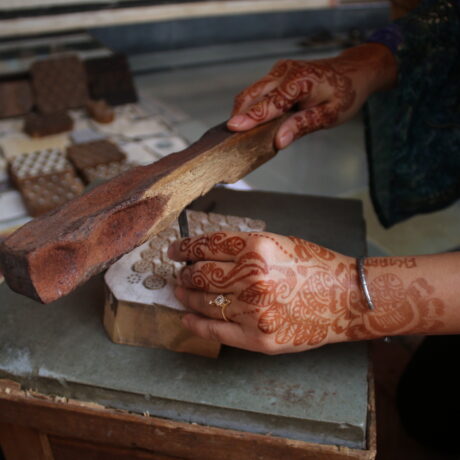Remembering Rana Plaza Workers: a Q&A with Greg Climer
By William Persson
Fashion Revolution USA’s Director of Communications Mackenzie Mock and Social Media Coordinator William Persson sat down with Greg Climer, artist and Assistant Professor of Fashion at California College of the Arts, to talk about his fine art rendition of a photograph taken at the Rana Plaza factory collapse, and why it is important to never forget this tragedy and the ongoing plight of garment workers around the world.
Tell us about your background in the fashion industry.
I am a former fashion designer, going on to teach fashion design at Parsons for twelve years. I moved this year to the Bay Area to teach at the California College of the Arts. The classes are studio driven, focusing on sustainable design such as zero-waste pattern cutting, farming practices, supply-chains, and, ultimately, rethinking current systems in the fashion industry.
I organically transitioned from being a designer to a teacher. I grew apathetic with working with one aesthetic all of the time. As a teacher, I am able to enter the classroom and experience a myriad of aesthetics at once.
I actually am not a skilled drawer, so I have always used fabric to sketch things out. I have been sewing since I was a child, so quiltmaking, fashion design, and other fabric media are where I am most comfortable working.
I have always believed that textiles are the most intense of our artistic media. We wear them daily. We sleep in them. They are a part of our being in a way most other media are not. We have an intense connection to them. I actually learned recently that our skin is so accustomed to fabric that we no longer feel clothing on our bodies. We actually feel the absence of clothing–but not the presence.
You recreated a famous image from the Rana Plaza factory collapse in fabric. When and how did you learn about this tragedy? What is your connection to it?
I learned of the disaster from the news almost immediately after it occurred. My response was similar to many within the fashion industry: “How can this be the case?” I was horrified, angry, frustrated, and grieving. Yet, I felt responsible to a degree. The industry knew about the issues facing garment workers, but we weren’t doing anything about it.
As I brought it up with other people outside of the industry, mentioning human rights abuses and the need for living wages, most were confused. They never linked clothing to human rights issues. But this incident was a real eye-opener for many. It encapsulates so many different levels of failure. It is a real life horror story, so it is easier for people to resonate with it. They recognized the labels of brands in the rubble. They heard the stories of the people who were there. It put a face to their clothing.

What do you think your piece, “Rescue Workers At Rana Plaza,” contributes to the sustainable fashion conversation?
I do not think of my art as a form of activism. I created this as a reminder and as a question. Before this event, there were other instances of tragedies that we forgot. I want my piece to be the reminder of these tragedies. It is similar to how the Black Lives Matter movement encourages us to say the names of victims of police brutality. If we forget their names and stories, we forget about the abuses and move on as if nothing happened. We cannot forget the names of these garment workers. We cannot move on until real change occurs.
The question at hand: “Why is my sewing valued while theirs is not?” I have a privileged position in society as a white male living in America. My work has been highly valued while garment workers are forgotten. It is easy for us to not consider #WhoMadeMyClothes when they are anonymous. There is a certain devaluation of their labor that comes from us forgetting that other people make our clothing. Machines do not make clothing–people do. Putting faces to the workers changes everything.
How can this visibility transform the industry?
The fashion industry needs a watchdog. Groups like Fashion Revolution and Remake are actively calling to account the failures of the industry. Holding them responsible is one of the most important things we can do.
I’m currently working on a project with tailors from Pakistan. They are very proud of their work and like to pose with their work in photos shared with me. By connecting with them, we humanize their work.
The act of filming others to show who makes our clothing plays a central role in these campaigns for a reason. Personal connection changes our perception of our garments.








